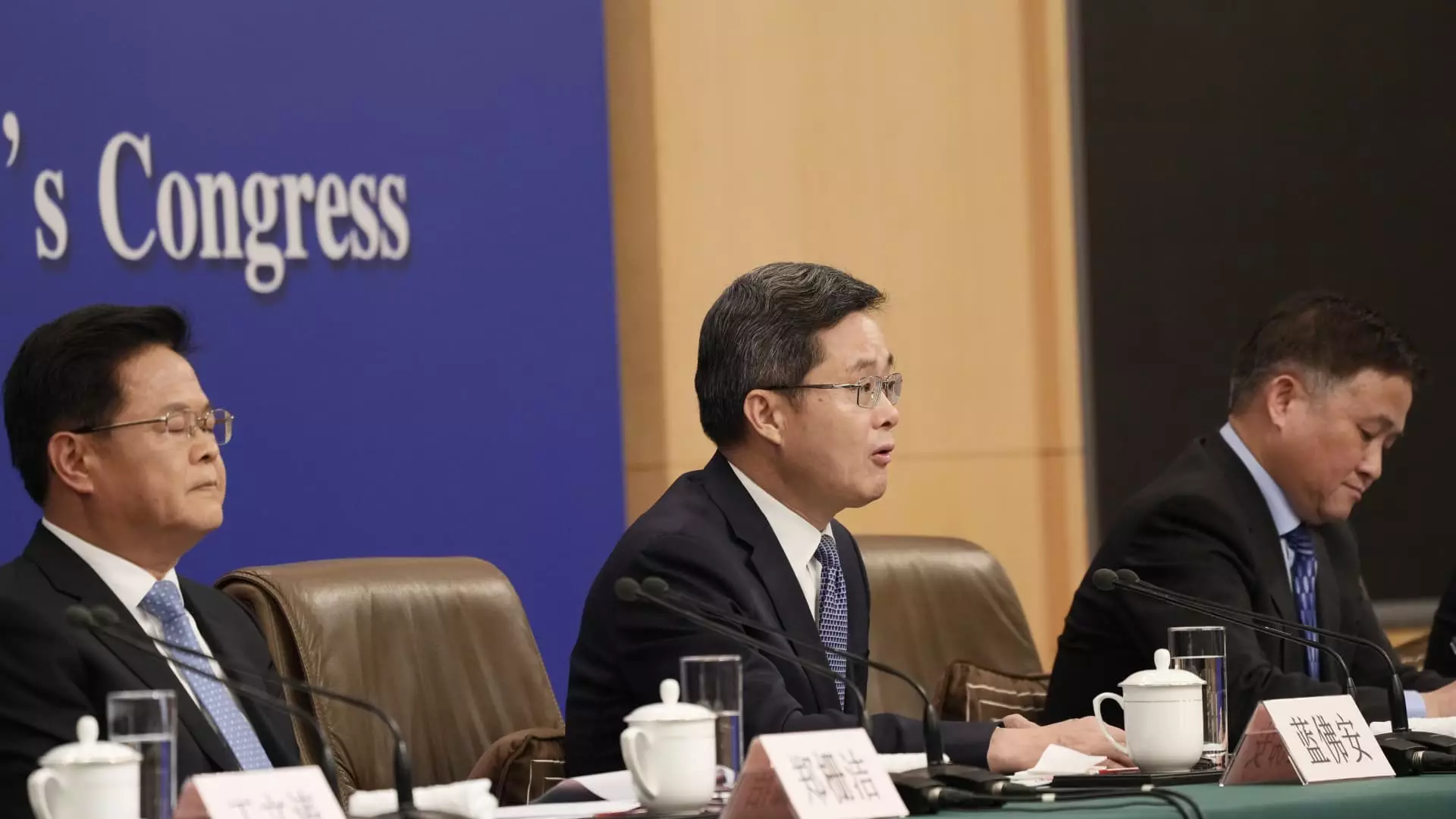China’s economic trajectory has been a focal point for international analysts, given its pivotal role in the global marketplace. Recent statements from Finance Minister Lan Fo’an highlighted that the central Chinese government is contemplating increasing its debt and fiscal deficit. This consideration arises as the nation faces mounting challenges, particularly concerning local government debts and an unstable real estate sector. Despite the urgency claimed by economists for more fiscal measures, detailed policies remain elusive, indicating a complex decision-making environment within the Chinese administration.
The need for fiscal stimulus in China has gained traction among economists calling for additional government support. Notably, estimates for required stimulus range widely, from an approximate 2 trillion yuan (roughly $283.1 billion) to as much as 10 trillion yuan. These figures underscore the gravity of China’s economic situation, especially with modest growth indicators and concerns about hitting the GDP growth target of around 5% for the year.
The government’s dialogue around enhancing fiscal capacity is an essential backdrop to understanding these conversations. While Lan emphasized that specific policies for bolstering local government support, stabilizing the real estate market, and promoting youth employment are under evaluation, the lack of detailed execution plans raises questions about the extent of the initiatives’ effectiveness.
In late September, a high-level meeting led by President Xi Jinping initiated discussions about fortifying monetary and fiscal supports. However, specific modalities of how these financial measures would be operationalized remained vague. Indeed, markets experienced significant volatility following a weeklong holiday, signaling investor uncertainty. Following an initial surge in stocks, aimed at responding to anticipated government interventions, a reversal occurred as enthusiasm waned.
The bruising market performance reflects investors’ anxieties regarding whether the legislative frameworks necessary for unlocking large-scale fiscal responses would materialize. Analysts like Ting Lu from Nomura pointed out that parliament’s approval is critical for any proposed stimulus, highlighting the interconnectedness of political processes and economic relief measures. The significance of how stimulus funds are employed cannot be overstated; merely focusing on local government bailouts without targeting consumption could lead to stagnation rather than invigorating economic activity.
China’s economy is grappling with a sluggish recovery in retail sales and ongoing struggles within the real estate sector, which have not shown measurable improvement. The anticipated release of third-quarter GDP statistics by the National Bureau of Statistics on October 18 is highly anticipated and is expected to shape the economic narrative for the remainder of the year. Recent trends suggest the GDP grew by only 5% in the first half of 2023, sparking concerns about the possibility of missing the overall annual target.
This economic backdrop sets the stage for policymakers to rationalize their approaches to economic stimulation. The discussions surrounding fiscal support are not merely bureaucratic; they reflect a broader crux between governmental strategies and the socio-economic realities faced by citizens, particularly the youth.
As China navigates its internal fiscal challenges, the implications extend beyond its borders. With the Federal Reserve’s recent adjustments to interest rates suggesting a shift in global monetary policy, the People’s Bank of China has also made moves to accommodate mounting pressures by reducing interest rates and extending favorable measures for the real estate sector. This synchronous maneuvering indicates a global interconnection where domestic policies are increasingly influenced by foreign economic signals.
The National Development and Reform Commission’s commitment to accelerating investment projects using previously allocated funds symbolizes a proactive stance, albeit without announcing new stimulus measures. This cautious approach suggests a calculated trajectory aimed at addressing immediate economic distress while carefully assessing the broader implications of fiscal exuberance.
China’s current fiscal deliberations represent a high-stakes balancing act between stimulating economic growth and managing burgeoning debt levels. Financial measures under consideration are essential for shaping the future economic landscape. As global observers keenly watch China’s forthcoming actions, it becomes clearer that the road ahead requires both strategic foresight and a willingness to innovate in policy formulation to mitigate the risks posed by volatile market conditions and an uncertain domestic economic climate. The resolution of these complex issues will dictate not just China’s economic future but also the global economic narrative in the coming years.

